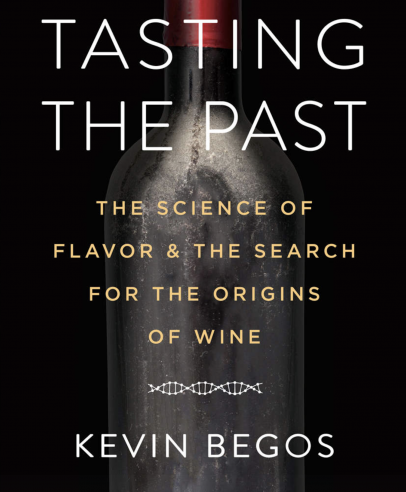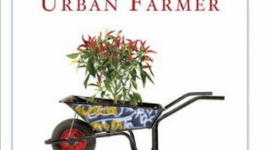Tasting the Past by Kevin Begos
Author Kevin Begos began Tasting the Past accidentally when he tasted a Palestinian red wine from Cremisan Cellars near Bethlehem. From this surprising quaff, he sets off on a decade long quest to locate wines’ origin stories. His “expedition” follows the historic wine routes “from the Caucasus Mountains down to the Holy Land”; from there, he traverses the Mediterranean and goes north through Europe. Unfortunately, this memorable wine from Cremisan was created by a long-gone winemaker. But the local grape varietals—his real subject— and their genealogy showed them to be distinct from the better known, and heavily planted, European wine grapes.
Begos presents the long history of wine grapes. He champions the growing of indigenous grapes and questions the unswerving dedication to the big six—Cabernet Sauvignon, Merlot, Pinot Noir, Chardonnay, Sauvignon Blanc and Riesling. By contrast, Begos beguiles the reader with an investigation of lesser-known grape varietals from Israel, Georgia, Cyprus, plus little-known grape-growing areas of Italy, France and finally in the United States, where he finds some fascinating varietals and genetic experimentation.
Learning experiences abound for both writer and reader. Begos stops at Alaverdi in Georgia (the Caucasus) where winemaking remains ancient and traditional—grapes, with skins and stems, are stored in large clay pots called qvevri. These may have been the inspiration for the original Mediterranean amphoras.
Not surprisingly, he finds some remarkable people along the way, profiling Arianna Occhipinti, who runs her atypical winery in Sicily using local varietals such as Frappato and Nero d’Avola, raising them organically and following biodynamic practices. Italy stands as the international leader using more than 400 grape varieties to make wine and actively promotes local grape varietals. Natural wine only makes sense in the homeland of the Slow Food movement. Even in France, Begos writes, “some French winemakers suffer from Chardonnay and Merlot fatigue, too.” But he details how more and more vintners are embracing sustainable practices and growing lesserknown local wine grapes. In the Gascony region, for example, winemakers use native grapes on a large scale.
The final chapter ends with encouraging wine news from our own country: A winery in Vermont specializes in varieties like Prairie Star. (Never heard of it? Me neither.) Genetic research is done at not just at wine-centric University of California, Davis, but also at the University of Minnesota and, closer to home, Oregon winemaker and potter Andrew Beckham makes amphoras for aging wine, and sales of these ancient-style wine vessels are brisk.
The reader comes away with an appreciation of the diversity of Vitis vinifera (the common grapevine) and a homework assignment: start drinking. Begos smartly includes tastings sections that detail websites, purveyors and ways to find the lesser-known but intriguing wines mentioned in the text. We may never know the exact origin of wine, but Tasting the Past unspools the past, explains current trends and explores pathways to the future.
Kevin Begos
Tasting the Past
Arianna Occhipinti | @ariannaocchipinti






